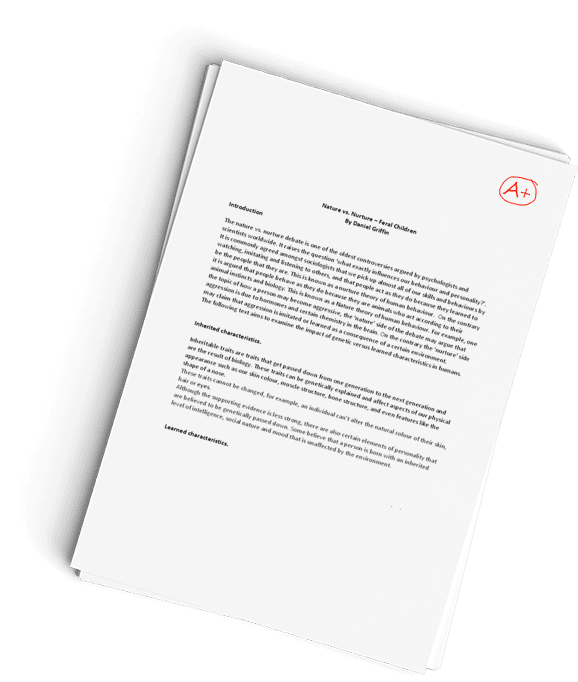What are the similarities between graft versus host disease and graft rejection
An adult patient with a chronic myelogenous leukemia sits down with you to discuss his questions and concerns about his upcoming bone marrow transplant. He has already received some educational materials and participated in a family conference during which health team members described the procedure and potential complications. He has been told that he has a risk of graft rejection or graft versus host disease (GVHD), but he does not understand the distinction.
a.What are the similarities between graft versus host disease and graft rejection?
I would tell him that both diseases involve the autoimmune system attacking the body. Specifically, organs/tissues that are transplanted. Neither disease can be prevented but there are measures to help reduce the risk. Immunosuppressive medications, corticosteroids, and other immune suppressing drugs can be used as therapy if this were to happen. (Conrad, 2018).
b.What are the pathophysiologic differences between graft versus host disease and graft rejection?
Both have a complex pathophysiology process that involves a number of interactions between the immune cells of the transplant donor and recipient. In graft versus host disease (GVHD), the immune cells from the donor attack the recipient’s tissues. While, in graft rejection the recipient’s immune system attacks the transplanted tissue.
GVHD through a long process ultimately ends with the donor T-cells reacting to HLAs present on host cells. (Conrad, 2018).
GRAFT REJECTION, also going through a long process of T-lymphocyte activation via a pathway that is normally associated with a pathway that is used for foreign substances, ultimately ends with CD8+ destroying the graft. (Norris, 2012).
c. How would these differences be manifested clinically?
With GVHD, within the first 100 days after transplant, symptoms such as skin rash, liver problems, and intestinal symptoms like nausea and diarrhea would start to manifest. (Norris, 2012).
With graft rejection the signs vary between organ. However, general discomfort, uneasiness, or ill feeling would accompany. Pain or swelling in the area of the organ, fever, body aches, and flu-like symptoms amongst many more could also manifest themselves. (MedlinePlus, na)
d.Studies have shown a protective effect of mild to moderate GVHD in cancer patients who have had a bone marrow transplant. Based on your understanding, can you explain these findings?
Being that GVHD is a disease where the donor’s immune cells attack the recipient’s tissues. Then, if a patient receives a transplant of bone marrow and their body reacts to it in such manner, it could be mildly beneficial. The theory behind mild to moderate GVHD having a protective effect could be related to the immune cells of the donor attacking the cancerous tissues of the recipient.
References
Norris, T. L. (2012). Lippincott CoursePoint for Norris: Porth’s Pathophysiology. [CoursePoint]. Retrieved October 1, 2020, from https://coursepoint.vitalsource.com/#/books/9781975101145/
MedlinePlus. (na). Transplant rejection: MedlinePlus Medical Encyclopedia. Retrieved October 1, 2020, from https://medlineplus.gov/ency/article/000815.htm
Conrad, D. (2018, February 23). Graft Versus Host Disease Symptoms, Prognosis & GVHD Treatment. Retrieved October 03, 2020, from https://www.medicinenet.com/graft_versus_host_disease_gvhd/article.htm (Conrad, 2018)
Perkey, E., & Maillard, I. (n.d.). New Insights into Graft-Versus-Host Disease and Graft Rejection. Retrieved October 03, 2020, from https://www.annualreviews.org/doi/full/10.1146/annurev-pathol-020117-043720 (Perkey & Maillard, n.d.)
ORDER A PLAGIARISM-FREE PAPER HERE
We’ll write everything from scratch
Question 
An adult patient with a chronic myelogenous leukemia sits down with you to discuss his questions and concerns about his upcoming bone marrow transplant. He has already received some educational materials and participated in a family conference during which health team members described the procedure and potential complications. He has been told that he has a risk of graft rejection or graft versus host disease (GVHD), but he does not understand the distinction (Chapter 12, Learning Objectives 1, 2, 10, 11).

What are the similarities between graft versus host disease and graft rejection
What are the similarities between graft versus host disease and graft rejection?
What are the pathophysiologic differences between graft versus host disease and graft rejection?
How would these differences be manifested clinically?Studies have shown a protective effect of mild to moderate GVHD in cancer patients who have had a bone marrow transplant. Based on your understanding, can you explain these findings?
Instructions:
Your primary post should be at least 200 words long and should include reference to the textbook or another course resource using APA 7th edition format. Your primary post is due by Wednesday at midnight ET.
"Place your order now for a similar assignment and have exceptional work written by our team of experts, guaranteeing you A results."







